- S.D. Eibar ready for maiden La Liga outing
- SD Eibar stengthen ahead of debut La Liga season
- Can ‘Super Mario’ live up to expectations in Madrid?
- MAN IN THE GROUND – Brentford 0 – 4 Osasuna
- Historic Basque derby welcomes S.D. Eibar to La Liga
- Munich to Madrid, via Brazil – Tony Kroos
- Rakitic in Spanish Switch
- Can Spain find redemption in Rio?
- Viva Espana! A season of redemption for Spanish football
- From the old to the new: who can fill the void in years to come for La Roja?
The issue is not the system: Spain 2-0 France – Tactical Analysis
- Updated: 24 June, 2012
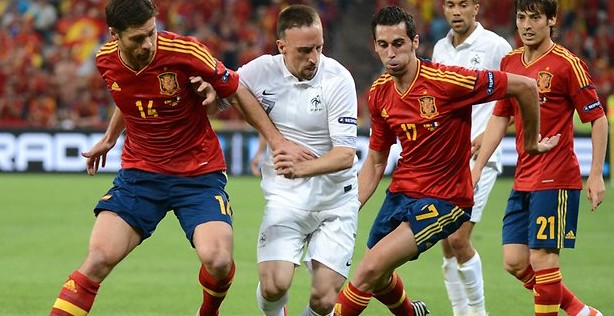
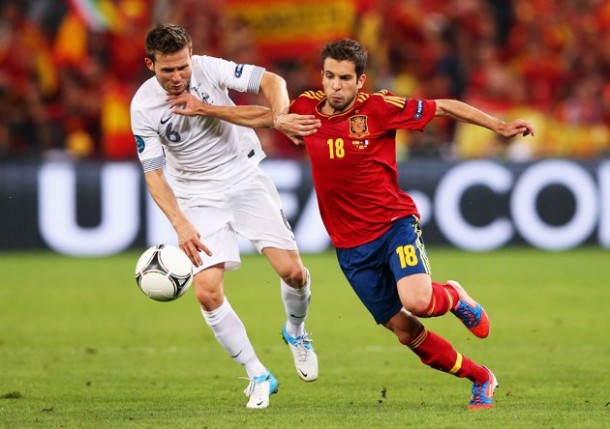
Again, this was a performance characterised by control and tactical discipline throughout although there were one or two moments in the second half when France attempted to gain a foothold in the match. Almost, but not quite.
We have been here before, haven’t we?
Line Ups
Del Bosque once more reverted to the false 9 system which is causing so much controversy with Fabregas replacing Torres.
Laurent Blanc made four changes following the disappointing defeat to Sweden in the final group game.
Koscielny replaced the suspended Mexes whilst Nasri, Ben Arfa and, most surprisingly, Diarra all dropped to the bench. Cabaye and Malouda were both reintroduced in central midfield. Anthony Reveillere made his first start of the tournament. Something of a lucky omen in previous games for France, Reveillere had yet to taste defeat on the twelve occasions he had started for les bleus.
The most interesting feature of the French side though, was the deployment of both Reveillere and Debuchy on the right flank. A move clearly designed to prevent Alba and Iniesta pushing down the left side.
 French Set Up
French Set Up
“We like when other teams leave out their ball players. It’s good for us when others change their system. We never change ours.” Xavi Hernandez
It’s hard to avoid the view that Blanc thought long and hard about his formation, probably too hard. He moved beyond the point of balancing his team’s aspirations and negating the Spanish, and concluded with a line up designed purely to stop Spain.
The inclusion of Debuchy almost as a right wing back with Reveillere behind was designed to combat the attacking thrust of Alba and his combination play with Iniesta.
However, on the one occasion when Iniesta released Alba on the left, the resulting cross was converted by Xabi Alonso.
The move also meant France lacked any sort of attacking impetus on their right and allowed Alba to push forward.
The double full back idea has been successfully put into practise at Valencia by Jeremy Mathieu and Jordi Alba, the man who helped undo it tonight, with both players understanding their responsibilities defensively and attacking. Debuchy and Reveillere seemed unsure in the first half. Despite being the right sided midfielder, in theory, Debuchy dropped to deep from the outset, allowing Alba to position himself further up the pitch.
The inclusion of Malouda in midfield was obviously designed as a link between midfield and attack but provided neither. The manner in which Alonso ran from a stationary Malouda for his goal must have alarmed Blanc. There may have been some tactical errors within the team but the players themselves must also share a portion of the blame for something as basic as failure to track a runner.
Spanish Mobility
With the use of the false 9 system, the requirement for midfielders to make forward runs is paramount. Spain have failed to do that so far with the exception of Fabregas.
Tonight, the Spanish midfield all demonstrated their ability to move forward.
The French midfield will be sorely criticised for their performance especially Malouda but it’s probably the first time in the tournament when the Spanish midfield have all offered higher levels of movement epitomised not only by Alonso scoring the opening goal but also by Busquets pushing forward and being the most advanced played at one point in the first half. The trend continued into the second half when Xavi operated almost as a second striker at times, tucked in behind Torres.
Xabi Alonso provided his best performance of the tournament so far showcasing his passing range and operating in a slightly more advanced position:-
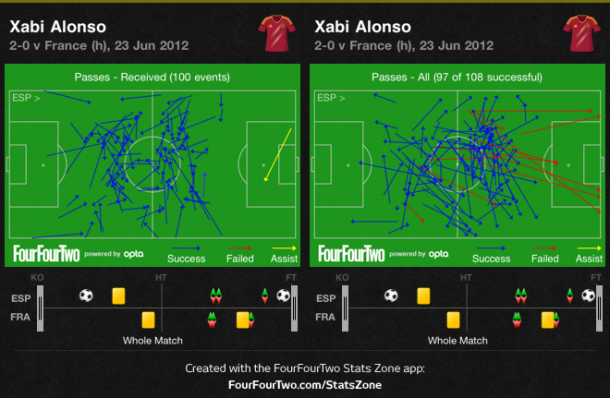
But does the mobility, and the improved performance of Alonso, come with a downside?
This was arguably Xavi’s weakest performance of the tournament. With Alonso more influential and Xavi moving further forward, we see the problems that were envisaged pre-tournament.
Xavi made fewer passes tonight and when he was positioned slightly further forward, the incisiveness of the pass begins to fade slightly with more horizontal passing becoming prominent. Alonso and Xavi need to operate in different areas of the pitch to both be effective. If Alonso steps forward, Xavi is squeezed. The Barcelona lynchpin remains unnervingly accurate with his passing through.
French Left vs Spanish Right
This had the potential to be a key battleground in the game yet it never quite materialised. The French are very strong on their left side with Ribery stationed there and joined by the drifting Benzema.
Against the weak link in the Spanish defence, Arbeloa, there was the possibility of success in this flank particularly as attacks would draw Pique out from his central comfort zone. Despite some forays, the attack seldom amounted to any real orchestrated period of pressure.
In the defensive phase of the game, Ribery seldom bothered tracking back and remained high up the pitch, letting Arbeloa push forward.
Missed Opportunity?
Once again, Alvaro Arbeloa had acres of space to himself on the Spanish right with France preoccupied with Alba on the left and Ribery uninterested in backtracking.
Whereas Alba is involved in combination play with the midfield, primarily Iniesta, Arbeloa is often left isolated on the right and typically only becomes involved in the play via crossfield passes. The ball tends to be played to him as opposed to ahead of him meaning he can be closed down quickly. Arbeloa is therefore forced to turn inside or pass backwards.
Opponents are not considering Arbeloa to be a threat. Against Ireland, Croatia and now France he has been left in space. Spain need to better utilise the space which opponents are presenting Arbeloa with.
Second Half
From an entertainment point of view, the second half was probably the dullest 45 minutes of the tournament to date.
France tried to increase the tempo of their play but struggled to find any sort of rhythm in their play, failing to register a shot on target during the second half. Spain, showing signs of tiredness, appeared content to play within themselves but just above the level of the French.
A number of substitutions in the second half offered potential to change the game yet had little effect.
The introduction of Menez and Nasri for Debuchy and Malouda offered more attacking options for the French. Del Bosque responded immediately with two substitutions, Pedro and Torres replacing Silva and Fabregas. The move provided Spain with more of a direct threat and seemed sensible with the increased likelihood of the game being stretched as les bleus pushed forward in search of the equaliser.
Pedro, rather than move to the right was positioned on the left perhaps to support Alba against the new threat from Menez and the attack minded Reveillere.
The substitutions failed to have any real effect for either side although Spain began losing an element of control. Their possession dropping from 63% in the 60th minute down to 56% in the 80th minute. Indeed, between the 60th minute and 75th minute, France had 55% possession yet throughout this period, Spain always looked secure.
The removal of M’Vila was Blanc’s last gamble in the 78th minute and it failed when Cazorla, a replacement for the tiring Iniesta, found space in front of the French defence, in the space which M’Vila had previously occupied, to thread the ball through to Pedro who was subsequently fouled for the penalty.
Cesc vs Torres – The Issue of Control
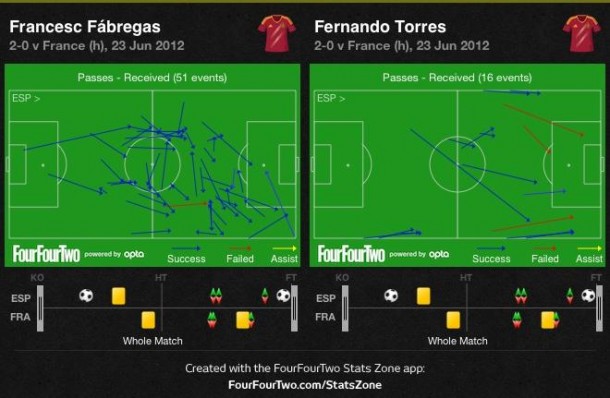
The chart above illustrates where Cesc and Torres receive or attempt to receive passes.
Whilst Cesc stays relatively deep in comparison to a conventional striker, Torres is moving towards the penalty area in most cases, operating off the shoulder of the last defender and always waiting for the through ball when he can utilise his pace.
Opponents of the false 9 system will point to this as further evidence of the need for a striker. Torres helps stretch the French defence and pushed them further back whereas Fabregas operates in front of the defence. Even if Torres is not performing well, his presence on the pitch forces defenders into a decision. If they push high, there is always the chance of Torres breaking free therefore, the opponent recognises this and defends deeper.
Whilst that is true, what is also important to note is the additional control which Fabregas offers. The introduction of Torres and a more vertical Spain resulted in possession dropping and a loss of control for a period in the match. Playing through balls to suit the natural game of Torres comes at a premium. Not all passes will be successful and the opposition then have the ball back and Spain need to press once more.
With the movement of Fabregas and his combination play, Spain dominate possession and tire the opponent out.
In the games against Italy, Croatia and France, del Bosque has made a change around the 60 minute mark, introducing pace and width to the side initially via Navas and now with Pedro.
Spain control the game, suffocating you with possession and when you are beginning to tire, they introduce an element of verticality to their play.
It’s becoming the del Bosque standard and allows the Spanish players to operate at a lower physical level during the match as they control the tempo. The players have greater recovery periods during the match whilst the opponents chase shadows. The Spanish players need this recovery time too. There are signs of tiredness now.
Space Creation
Against both Croatia and France, opposition substitutions have created space for Spain to attack. The removal of Vukojevic in the 81st minute allowed Fabregas space to move forward unopposed and play the pass which released Iniesta against Croatia. Against France, the removal of M’Vila after 79 minutes provided Cazorla with time and space to pass forward to Pedro under no pressure.
Teams set out defensive formations against Spain but the loss of a goal alters the paradigm of the match. The opposition coach must react, typically, by removing a defensive payer and replacing him with an attacking player. But so far this has not yielded results and only offered Spain more room to create attacks and ultimately, score goals.
Conclusions
There were some issues for concern for Spain tonight but perhaps not what many people expected. Spain showed glimpses of fatigue. “I am thinking about this problem,” admitted del Bosque
With two days less rest before they meet Portugal in the semi finals, don’t expect Spain to showcase expansive attacking football in the remainder of the competition. Although capable of it, this tournament now becomes solely about the result and the opportunity to make history.
Will this result now end the discussion around the Spanish set up? Probably not even though the players themselves appear convinced as Alonso states:”The issue is not the system, but how you use the system”
Spain will not change. They will continue to play the same way they have done over these past four years with an inherent belief that what they are doing is correct. It’s proven a highly successful tactic thus far. The question which Paulo Bento must ask is whether he changes tact or does have he have the same level of faith is his players which del Bosque shows in the Spanish?
Follow @icentrocampista

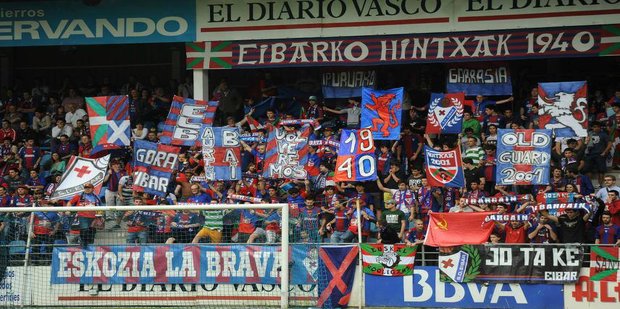

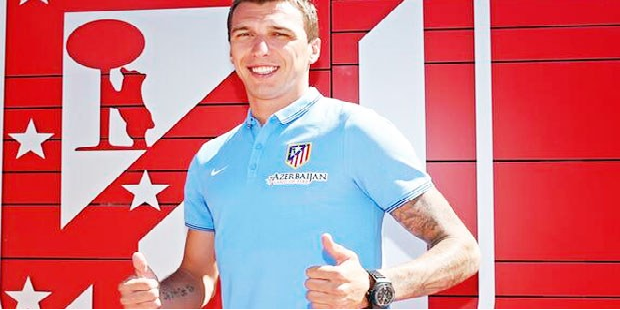


You must be logged in to post a comment Login